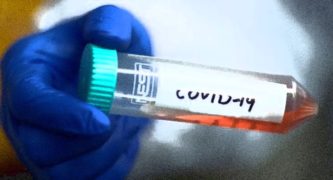
According to the city’s Public Health Director more research is needed to determine if people infected with the Coronavirus can become re-infected or develop immunity after recovering from the virus.
“We don’t know yet to what extent people have immunity after becoming ill with COVID-19,” Goh told Pasadena Now on Tuesday. “As these studies are being done we will learn more.”
The question of reinfection has been one of the most pressing questions since the outbreak began in Wuhan, China in January.
On Monday, South Korea reported that 116 coronavirus patients they believed to have recovered from the disease tested positive for the virus again.
Jeong Eun-kyeong, the Director of the Korea Centers for Disease Control and Prevention, said in a news briefing that the virus may have “reactivated” in the patients, as opposed to the patients being re-infected again, Bloomberg reported.
Other experts said faulty tests may be the culprit.
In Wuhan, about 5 to 10 percent of patients who were pronounced recovered have tested positive again according to NPR.
Patients in Italy also retested positive for virus after supposedly recovering
Some of those who retested positive appeared to be asymptomatic carriers — those who carry the virus and are possibly infectious but do not exhibit any of the illness’s associated symptoms.
If those patients could still infect other people, the results could be disastrous as states within the US begin lifting Safer at Home orders.
As of Tuesday morning, nearly 2 million people cases had been reported around the world leading to more the 121,000 deaths.
In the United States there have been nearly 585,000 cases leading to almost 25,000 deaths.
“We are aware of these reports of individuals who have tested negative for COVID-19 using PCR (polymerase chain reaction) testing and then after some days testing positive again.” a WHO spokesperson told Reuters.
In a PCR test, samples are taken from the nose, the back of the mouth or deep inside the lungs where the virus that causes COVID-19 is likely to be found.
After a sample is collected, RNA, which is part of the virus particle, is extracted and converted to complementary DNA for testing.
The PCR test involves binding sequences on the DNA that only are found in the virus and repeatedly copying everything in between.
This process is repeated many times, with doubling of the target region with each cycle. A fluorescent signal is created when amplification occurs, and once the signal reaches a threshold, the test result is considered positive. If no viral sequence is present, amplification will not occur, resulting in a negative result.
According to Goh, a person is no longer considered infectious based on CDC criteria after at least three days (72 hours) have passed since recovery is defined as resolution of fever without the use of fever-reducing medications and improvement in respiratory symptoms (e.g., cough, shortness of breath); and, at least seven days have passed since symptoms first appeared.
Goh said one antibody test has been approved by the FDA so far.
“Coronavirus is different from influenza virus, so you would not expect any flu immunity.” Goh said.
Managing Editor André Coleman contributed to this story














 0 comments
0 comments


